by atmara | Nov 28, 2011 | Art, Mandala Coloring, Mandala Monday, Mandalas, Meditation
Author: Edith Lynch
Negative self talk and the inner dialogue that is continuously present in our mind is the basis and expression of the reality we are creating. We need to suspend this inner talk to reach a state of awareness and to connect with our inner center of knowing and being.
In Mandala Coloring the focus is on the coloring and our inner dialogue is suspended. When this occurs there can be self discovery and an opening or ourselves to healing and creativity. The suspension of inner dialogue (which may be the “ego”) allows a different perspective for situations from our past and provides new solutions.
Carl Jung studied mandalas and he observed:
The “squaring of the circle” is one of the many archetypal motifs
which form the basic patterns of our dreams and fantasies. But it
is distinguished by the fact that it is one of the most important
of them from the functional point of view. Indeed, it could even
be called the archetype of wholeness.
Coloring a predetermined shape is a practice that can bring us into contact with a framework that already exists. This can lead to a better understanding of established structures, and provide an opportunity to connect to a part of us that is unchanging and steady. The simple act of coloring a mandala can provide an outlet for stress and a means to be brought back into peace and harmony.
Just as photograph reminds us of our family members and our place in the family, the mandala is a picture of who we really are. It can help us remember ourselves, and despite outer turmoil and chaos, it is a source of quiet.
While the creation of a mandala allows us to express a picture of our inner world as it may exist in an ego sense, coloring a mandala reminds us of the cosmic forces that rule our lives. It is bringing us back to our beginning and centering us in the reality that is our existence.
Mandala Interpretation is an interesting way to look at a Mandala
The first step in interpreting your mandala is to determine a title for your mandala. You can write down your title and then study it to identify any feelings or insights that may be apparent. Just write down what comes to you, and don’t spend a lot of time thinking about it.
Next, list the colors that you have used and after each color write an association to the color. There is no right or wrong to interpreting colors – you can write what the color is saying to you. Become aware of colors that you commonly use, and note any emotions or feelings. As well note any shapes that you see and write those down along with the associations that pop into your mind. After you have written those, note any patterns, themes or energies that seem to emerge. Write a few sentences about what you are feeling.
A Mandala Coloring Book gives you the basis for coloring and interpreting your mandala.
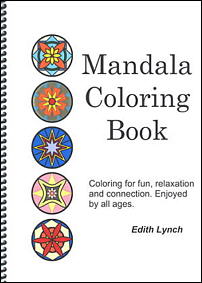
Article Source: http://www.articlesbase.com/stress-management-articles/meditation-through-mandala-coloring-472558.html
About the Author
Edith Lynch, M.Ed. is an Educator, Speaker and Workshop Facilitator. She has extensive training and experience in Teaching, Curriculum Development, Transformational Training, Transformational Leadership, Reiki I and II, and Law of Attraction.
——————————————————————————————————–
I look forward to your thoughts and comments!
Be sure to Subscribe to this blog either by RSS or Email via the forms on the top right column of the page.
Like this:
Like Loading...
by atmara | Nov 11, 2011 | Art, Mandala Monday, Mandalas, Meditation, Spiritual Awakening, Video
There are many interpretations of what the date 11/11/11 signifies. I don’t profess to being an expert on any of them, but I was inspired to create a Mandala Meditation Video for the occasion which is 11 minutes, 11 seconds and 11 frames long. No matter how you interpret this date, enjoy this 11 minutes plus of peace.
——————————————————————————————————–
I look forward to your thoughts and comments!
Be sure to Subscribe to this blog either by RSS or Email via the forms on the top right column of the page.
Like this:
Like Loading...
by atmara | Oct 31, 2011 | Art, Mandala Monday, Mandalas, Meditation
Meditation has been used since ancient times to reduce stress, find one’s center, calm the mind and soothe the soul. Contrary to what you may think, not all meditation is spiritual, just as many individuals use it for personal use. Regardless of your reasoning or goals you hope to achieve, your personal journey can be significantly enhanced by using a mandala.
Sanskrit, for the English word circle, the mandala has been introduced to the population through Buddhist and Hindu religions. When you choose a mandala for meditation purposes, it is important to be aware that each one is very different. They offer their individual symbolism and quite often, a deity is housed in the center.
When you gaze at a mandala during meditation and follow one point to another your mind and body naturally become intertwined. When you are able to become one with the mandala, you have entered into a quasi state as you are captivated by the mandala’s design.
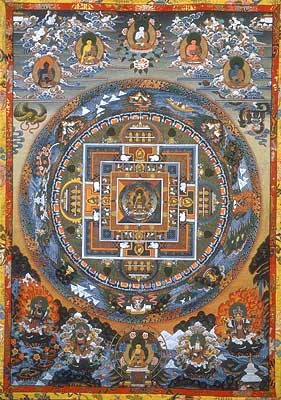
Choosing the right mandala is imperative for your journey. Although Tibetan Monks sweep their sand mandalas up and take them to a nearby body of water so they can finalize their circle of life, your actions don’t need to be as extreme to be effective. In fact, there are coloring pages which are available online that can be downloaded or you can simply draw your own if you’re feeling creative.
(See the post, 10 Links to Free Mandala Coloring Pages for sources of coloring images)
If you want a more traditional mandala, you will find them primarily made from silk, thangka or sand but contemporary versions are available in the form of photographs, paintings, fiber arts and even sculptures.
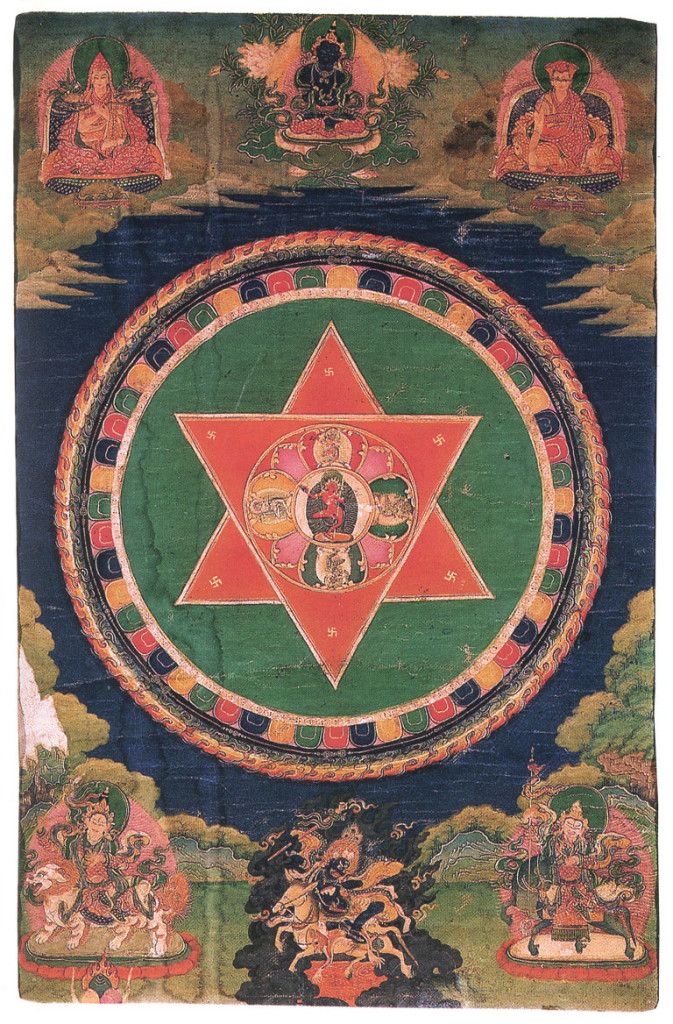
When you prepare to meditate, it is important that you are able to find yourself in a comfortable position, somewhere quiet where you won’t be interrupted with your mandala placed across from you at eye level. Some find it helpful to create an altar for their mandala, adding objects that are symbolic of peace, grace, purity and spirituality.
When you begin to meditate, you will start at the entry point which is always the mandala’s outer ring. According to Tibetan tradition, it is this part of the mandala that essentially purifies you so that you are able to continue on with your journey. As you concentrate on the various colors, shapes and lines, the path gradually leads you toward the center. Quite often, you will reach a dead end on your journey, this is to be expected. A mandala takes you on a path to enlightenment so there are times you need to reverse your path to get closer to the center.
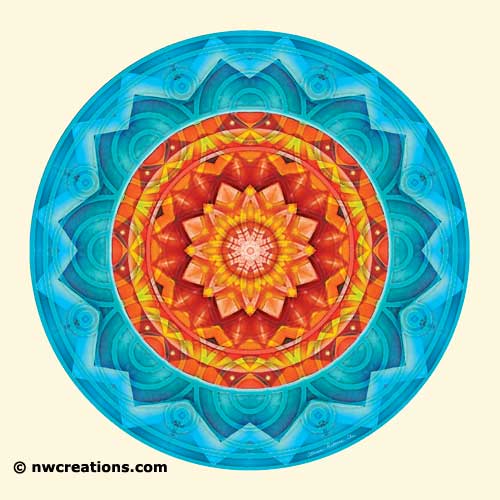
Mandalas of Deep Trust, No. 8
© Atmara Rebecca Cloe
As you make your journey inhale and exhale slowly through the nose, concentrating on your body’s rhythm. You will find that as you become one with the wisdom of the universe, your body’s rhythm will begin to match the design of the mandala.
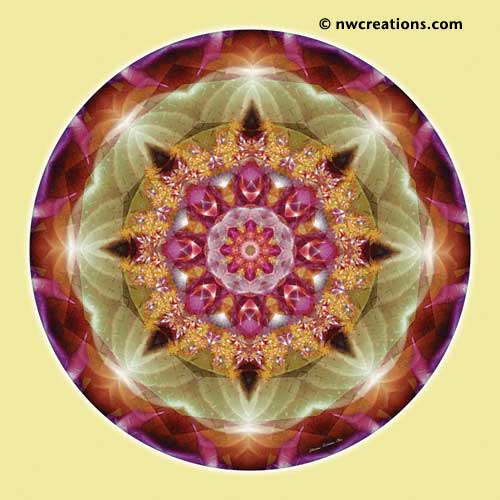
Mandalas from the Heart of Peace, No. 1
© Atmara Rebecca Cloe
It is recommended to partake on this journey to enlightenment for anywhere between 15 to 30 minutes. You will likely feel energized as well as quite surprised at just how powerful this sacred object actually is. As you release the stresses of the outside world, you will become quiet, calm, still and tranquil.
Article by Epouna
www.meaningofmandalas.com
Images from Wikimedia Commons and Atmara Rebecca Cloe
See all of Atmara’s Mandalas at Zazzle.com
——————————————————————————————————–
I look forward to your thoughts and comments!
Be sure to Subscribe to this blog either by RSS or Email via the forms on the top right column of the page.
Like this:
Like Loading...





